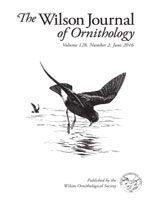Previous studies of European Starlings in Argentina have focused on identifying biological aspects correlated with establishment of new populations in urban and suburban areas. Starlings have recently invaded rural areas in the Pampas. To understand the factors involved in the recent expansion of European Starlings into these rural habitats, we investigated how expansion patterns were associated with season, proportion of crop fields, distance to woodlots, and distance to small and big urban centers in agroecoystems of the Pampas. We surveyed 392 fields during 2011–2013 to collect data on presence of starlings and landscape features. We found that the range of European Starlings has expanded by a total area of ~65,000 km2 since 2005, at a linear range expansion rate of 22.2 km per year. Generalized linear mixed model analysis revealed that presence of European Starlings was significantly related with reduced distances to nearest small urban area. Our findings indicate that range expansion of European Starlings into rural areas of Argentina may follow a neighborhood diffusion pattern, by which well-established populations act as sources of individuals that disperse short distances into nearby favorable areas. In absence of human control, this species is expected to continue its spread and population increase.
BioOne.org will be down briefly for maintenance on 14 May 2025 between 18:00-22:00 Pacific Time US. We apologize for any inconvenience.
How to translate text using browser tools
30 June 2016
Role of landscape elements on recent distributional expansion of European Starlings (Sturnus vulgaris) in agroecosystems of the Pampas, Argentina
Emmanuel Zufiaurre,
Agustin Abba,
David Bilenca,
Mariano Codesido
ACCESS THE FULL ARTICLE

The Wilson Journal of Ornithology
Vol. 128 • No. 2
June 2016
Vol. 128 • No. 2
June 2016
agriculture
biogeography
BIOLOGICAL INVASIONS
Neotropics
Sturnidae





